Plants are the key to a human being’s survival. It is a given that plants don’t just provide us with oxygen but also provide us with food, and shelter. With plants having so many uses in nature, individuals have found that keeping plants at home offers a more soothing effect. It helps an individual feel relaxed and feel as though they are one with nature in the concrete jungle with a household plant. Just looking at plants relaxes one’s mood and brings about a feeling of serenity. However, you may be allergic to some plants or not have the space to house others or even find certain plants more attractive. Choosing the right indoor plant is a tough decision, in this blog you will find the tips to follow while buying an indoor plant as well as the benefits which will help you acquire the perfect green partner to stay at your home.
So you’ve been bitten by the (plant) bug. You’ve discovered something green and leafy that will transform your home into a lush and eye-catching jungalow. Buying houseplants may be a lot of fun, and it can also help you relax and de-stress. As a result, it’s not surprising if you leave the nursery with an empty wallet. To be honest, not every houseplant in the nursery is as healthy as it appears. So you wind up with an indoor jungle full of unhealthy or struggling houseplants most of the time.
That’s why, especially if you’re a newbie, these houseplant purchase recommendations are essential. With a little forethought and research, you may bring home attractive, healthy houseplants that can last for years.
There are basically three main tips you should Follow:
Before you go to the nursery, you should plan, research, and study your home’s environmental conditions as well as the types of houseplants that would thrive there. In any case, it’s a good idea to look about your house and see where you could put the plants. Make a mental note of these spots and consider what size plant would be appropriate or complement your design. If you have a little space, a tall slender plant or a hanging plant can be a good choice. You might fit a larger plant in a larger space.
Before bringing a plant home, thoroughly inspect its overall condition; eliminate any plants that appear to be weak and replace them with better ones. Look for evidence of health and avoid plants that have been injured or bruised.
Read the plant label/Tags carefully because it contains crucial information about the plant’s light, watering, and fertilising requirements. Some labels also state whether the item is low or high maintenance.
If you have any questions about the information on the label, you can look it up on the internet or ask a nursery employee or can also research it on Google.
Most nursery plants will be in a pot that will last a long time and will not need to be repotted. However, it is worthwhile to examine the plant at the soil level. If the plant has a lot of visible roots or appears to be root bound, it may need to be repotted!
This should not deter you from purchasing the plant. It’s just something to think about so you can get a fresh pot and dirt for it.
When purchasing houseplants, inspect them thoroughly for pests or diseases. Insects and pests lurk on the undersides of leaves or at the developing tips of plants, making it difficult to notice them all at once. Take your time inspecting the plant from every angle to make sure it’s in good shape.
Scales, aphids, and mites are common pests to look for. Also, look for dark patches, holes, blisters, deformation, or sticky leaves on the plant.
Plants that are in full bloom should be avoided. Though the blooms may lure you with their beauty, they will fade away in 2-3 days and then grow at their own pace. Picking plants with a few or many flower buds is a good idea; this way, the plant will bloom once you get it home! Also, make sure the foliage is in good shape.
You may not realise it, but some nurseries, mainly the larger ones, provide warranties since plants might die months or even weeks after planting. Some nurseries, particularly smaller, local nurseries, do not, owing to the fact that they cannot control how the consumer would care for the plant, which may result in its death, and we understand.
One of the best ideas for buying houseplants, especially those that are difficult to cultivate, is to go to a nursery that will give you a guarantee on the plant. You probably won’t need a guarantee if you’re buying easy-to-grow houseplants.
Unfortunately, some plant stores sell unhealthy plants; nevertheless, you may prevent these unhealthy plants by studying the characteristics of an unwell houseplant.
Do not pay the plant’s price set by the garden centre or nursery. Always haggle to ensure you get the best deal possible. It’s also a good idea to go to at least three garden centres or nurseries to compare prices and then choose the one with the best deals! Overall it is your Right.
Purchasing plants online has its pros and cons. The main con of buying online would be that you won’t get to see the plant you have bought until it is delivered to your home. If the shape and colour of the plant are the top-most priority for you then buying online wouldn’t be the best idea. However, if you want to nurture the plant into what it is capable of being then you can purchase them online with the following benefits in tow.
Whatever houseplant you pick to turn your home into a vibrant sanctuary, you’ll need a strong mind to display your new plant baby. That will go with your yard and home’s décor no matter what your style is.
Right now, plants are experiencing a bit of a craze. Beautiful interiors draped in green vines, hanging plants, feisty succulents, and trees that liven up every part of a space can be found on Instagram with just a fast scan.
Indoor plants benefit your emotional and physical well-being in ways you probably didn’t realize. Have you ever wondered why you feel like you can breathe easier, focus better, and just be happy when you’re in a room with a lot of natural light? These advantages, it turns out, predate our ostensibly newfound passion for greenery.
You’ll be able to breathe cleaner air
Indoor plants, according to research, help to remove common toxins and indoor pollutants like formaldehyde and benzene from the air. In fact, one study indicated that in a 12-hour period, the bromeliad plant removed more than 80% of six volatile organic chemicals (out of eight tested), while the dracaena plant removed 94% of acetone (the pungent compound in many nail polish removers).
“The ability of plants to purify the air depends on a variety of factors, including the size of the plant, the size of the indoor space, and the amount of toxins in the air,” When it comes to the connection between plants and space travellers, NASA points out that plants, “When consumed as food, they nourish the body and improve the quality of indoor air. Plants absorb carbon dioxide from the air and convert it to oxygen that humans may inhale.”
They add to the comfort of any space
Indoor plants not only provide colour and life to your area, but they also alter the physical environment in a positive way. “By shading a bright, sunny window, plants can be used to raise relative humidity indoors, reduce noise, hide unappealing areas, and control room temperature,” adds Altman. Before you start filling a room with furniture and accessories, consider how you want to feel in that area and how plants can help you get there.
Improve your mental health
Plants can also be beneficial to your mental health. One study found that after 28 new plants were installed in common areas of a heart and lung rehab clinic in Norway, patients reported a larger boost in well-being four weeks later than those who did not have added greenery. “We developed on this planet among the grasslands, surrounded by trees and plants,” says John Beirne, HTR, horticultural therapy instructor at the New York Botanical Garden and Willowwood Arboretum’s superintendent of horticulture. “It’s no surprise they make us feel at ease—they’ve been feeding our bodies and souls for millennia.”
You’ll feel satisfied with yourself
Residents in an assisted-living facility increased their quality of life when they potted plants and learned how to care for them at home, according to another study. It could be related to a sense of accomplishment or the companionship people had with their plants, according to researchers (some said they talked and sang to them).
They’ll make you forget about your worries
“Potting plants and actively caring for them allows you to forget about troubling, stressful events in your life and focus on the here and now,” explains Altman. “While this is beneficial to us and our psychological well-being, the plant also benefits from this attention, it grows faster and is better able to deliver the physical benefits.”
Herbs for Better Digestion
Mint can aid with bloating, gas, and other digestive issues after a meal. Peppermint and spearmint are two common kinds that can be grown in containers (essential in mint juleps). Basil, another cooking herb, might also aid to settle your stomach. Steep the leaves in boiling water for a while.
Aloe Vera (Aloe Vera) for First Aid
This plant’s gel is a popular home treatment. Sunburns and other mild burns can be treated with it. It can help with psoriasis and other skin problems. If you’re constipated, the juice from the aloe plant can even help you poop.
Better Mental-emotional Health to Survive
Gardening is used by some therapists to treat depression, schizophrenia, and other psychiatric disorders. Learning to care for a living plant can help reduce anxiety, increase attention, and alleviate depressive symptoms. People healing from trauma, as well as those with dementia or in long-term care homes, may benefit from plants.
Quick Healing
Visiting a loved one in the hospital with a bouquet of flowers or potted plants can be more than simply a considerate gesture. It could really help people heal faster. People who had surgery recovered faster if they had plants in their room or a glimpse of nature from their window, according to researchers. When they were surrounded by greenery, they also endured pain better and required fewer drugs. A peace lily or an orchid is a good choice.
“Our tight contact with plants also aids folks in recovering more quickly from disease or accident,” says Altman. “We may build a natural, living refuge in which we feel safe and protected by surrounding ourselves with plants.”
Plants can even help with therapeutic treatment
Growing and caring for plants can also assist a person in their official recovery process with a horticulture therapist. “Horticulture therapy is the use of plants as part of a well-organized recovery and wellness treatment plan,” explains Beirne. “It entails specialists formulating and setting quantifiable goals for the individual getting care to attain.” “Eventually, the goals will assist the person in overcoming the difficulties, problems, or hurdles recognised by their treatment team.”
This is a topic that has sparked some controversy. If pollen aggravates your allergies or asthma, you’ll be happy to find that most common houseplants don’t produce much pollen.
Despite the fact that some cut flowers, such as daffodils, can emit pollen, asthma researchers have found no evidence that indoor plants induce asthma attacks. If wetness, mould, or fungi are causing your problems, you may need to pay close attention to the soil moisture in your plant containers.
If you develop asthma symptoms after introducing plants into your house, you should remove them until you can speak with a healthcare expert about your concerns.
Like anywhere else, there’s a hierarchy to plants as well, with regards to how beneficial they are to you in an indoor scenario. There are a plethora of indoor plants that offer both aesthetic and useful qualities. In case you were confused about which plant to go for then look no further as this blog will help you find the right housemate for you. Below you will find some of the top picks for indoor plants and the uses they provide.
Spider Plant
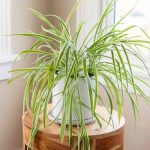
The spider plant is at the top of the list as it is a good purifier of air and is the least complicated plant to maintain. This is a true beginner-level plant as you it is easy to care for compared to other plants. These plants have thick and fleshy roots so if you were to forget to water them occasionally it won’t be a cause for concern as the Spider plant can withstand it. The Spider plant removes toxins such as formaldehyde, xylene and carbon monoxide. These plants are edible as well making them safe to keep at home with infants or pets that might try and sneak a bite.
Aloe Vera

Aloe vera is one plant that has been used by humans for centuries thanks to its various beneficial properties. Treating sunburns and normal burns, used as a mask or face wash to clear acne, ingesting it for digestive issues, keeping fruits and vegetables fresh, and helping with oral care are just some of the many things that aloe vera is useful for. It is also easy to maintain as you don’t have to water it too much and the plant is well suited for harsh dry conditions.
Dracaena

When it comes to purified air, Dracaena is at the top of the list. It rids the air of harmful chemicals such as formaldehyde, benzene, trichloroethylene and carbon dioxide. If you don’t have or don’t plan on having any pets then the Dracaena is a good choice as pets often nibble on houseplants and the Dracaena is poisonous for them.
Snake Plant
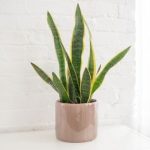
This plant helps remove nitrogen dioxide which is harmful to humans. It is sometimes considered to be a lucky plant as it absorbs poisonous gases from the air. These gases are the cause of various health problems that many fail to notice until it’s too late. Thanks to the snake plant, however, the severity of these issues are drastically reduced. The snake plant when grouped with other plants makes the surrounding environment more humid as well.
Peace Lily

A beautiful plant that oftens provides a sense of aesthetic grace when accordingly placed within households. This low maintenance air purifier grows according to the amount of soil it is introduced to. It not only purifies the air but also rids the atmosphere of acetone and alcohol vapours that cause various problems to your health. This nifty plant also prevents mildew by absorbing excess moisture in the air and removes mould spores floating around as well.
Boston Fern.
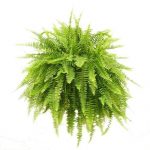
This pretty jungle looking shrub purifies the air and also provides humidity. This form factor proves to be beneficial for individuals that face the constant struggles of dry skin, sore throat and dry nose. It provides a soothing effect as it modulates the air naturally. These plants naturally vary in size depending on the amount of soil they are exposed to. They can be made into decorative pisces by fitting them into aesthetic pots.
Weeping Fig
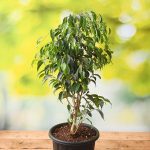
Want a miniature tree inside the house but not too small like a bonsai? A weeping fig plant also known as the Ficus plant can be the perfect indoor companion. You will be greeted with fresh air thanks to the Ficus plant as it is another air purifier among the many mentioned plants in the list. This is a tough plant that will grow well in hardy conditions with minimal sunlight and moderate watering.
Bamboo Palm
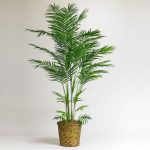
Bamboo palms offer a sense of serenity with their air purifying methods that rid the air of harmful pollutants like carbon monoxide that are truly your bodies worst friend. These plants can grow up to 12 feet but in good outdoor conditions, their growth will be limited to indoor environment limitation but still tend to grow well under scarce light. These plants do however require adequate amounts of moisture so make sure to keep them hydrated often.
Chinese Evergreen
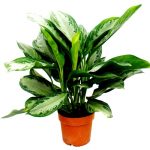
Known to be among the top most desired for indoor plants, you will find that the chinese evergreen is widely considered to be a lucky plant all over the globe. It requires almost non existent attention as it will grow well in dark corners of the room adding a very lush greenery to an otherwise dull corner. It even emits somewhat healthy levels of oxygen which is definitely an added bonus to your collection.
Rubber Plant
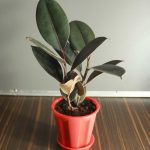
A rubber plant offers a truly remarkable presence with its moody darl leaves that provides a crepescular vibe. This like many indoor plants provides purified air by absorbing harmful chemicals. It is an easy to care for indoor plant that is inexpensive. Adding a rubber plant to your home will undoubtedly be a rewarding decision with the amount of pollen free allure that it possesses as an indoor plant.
Several studies have shown that studying or working in the presence of plants has a significant impact. Being in the presence of plants boosts concentration, memory, and productivity in the same way that simply being in nature does. So attempt to connect with as many plants as possible to make your life easier and more comfortable.




